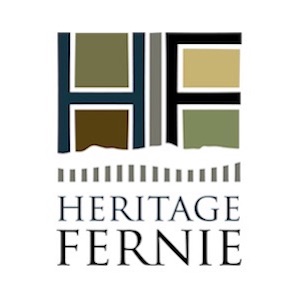by Ange Qualizza, Mayor, City of Fernie
There are some very interesting careers to be had in local government and one that I think would be fascinating to no end is that of a city planner. A planner determines how to best use the city’s land resources, weighing decisions and recommendations on the future needs of the city. They advise how to construct social housing, recommend zoning and regulatory frameworks, design transportation networks, write bylaws and approve subdivisions. By no means is this list exhaustive, and in fact, recently our planning team wrote our first Heritage Revitalization Agreement.
The City of Fernie received an application to rezone the Lutheran Church from Public Institutional to Residential and our planners were faced with the challenge of how to preserve the value of a heritage building, and perhaps more importantly, create a framework that would ensure that the Lutheran Church would not be demolished.
The Heritage Revitalization Agreement (HRA) is a voluntary agreement between the local government and property owner and outlines the duties and obligations of the property owners but it is designed to be beneficial to both parties. Each HRA is written to suit the unique situation it applies to, in this case as we moved through the process of allowing a church downtown to transition to a single-family home, our biggest goal was to preserve the heritage aspects of the building.
An HRA is enabled with a bylaw that is registered on title of the property and affords long-term protection for the values we wanted to preserve. The process was an excellent opportunity for our planning team to do exactly what they do well, manage the interest of the municipality and create a process that worked well both the buyer and the seller.
Derek Cimolini took the lead on this project and comments, “Lucky for us, while working with a heritage consultant, they floated the idea of Heritage Revitalization Permits to retain Fernie’s valued historic buildings. The HRA is a great tool contained in the Local Government Act. In most cases, we cannot vary things like land- use or density, but the HRA gives us that latitude. In the case of the Lutheran Church, a pending sale was contingent on residential land-use, so the potential purchaser applied for a standard re-zoning. Knowing that other variances such as siting and parking might be required to develop the building into a residential dwelling, and that the building had heritage value, I proposed the HRA as an alternative. This would take care of both the rezoning and the variances at the same time while working to retain the heritage value. We were even able to write the Agreement so that if the sale fell through, then the Church would not be on the hook for costly repairs or alterations that were only necessary for the residential conversion.
“The process was a new one to me, but we got a lot of support for our consultant, as well as some heritage planners that are more familiar with HRAs, so it worked out well. Both the Church and the buyer seemed happy with the result, and the building that has been part of Fernie for over 100 years will not only remain intact but revitalized. Given how many buildings and properties there are in Fernie with heritage value, I look forward to using HRAs more often.”
I asked the buyer, Jeff Johnson, what it means for his family to move into the church. “We were drawn to Fernie for all that makes this town amazing. Some have opened cool shops, stellar restaurants, organized event, built trails, run great businesses. We see the opportunity to preserve a heritage building as our way of contributing to the awesomeness of Fernie. Built in 1910 and utilizing stone and brick construction, the Church remains a recognizable post-fire structure. We are so excited to be connecting to an important part of Fernie’s history.”
It would appear that with a cleaver new tool, our planning department hit a home run and I’m sure all of Fernie will be eagerly watching this project.
This article appeared in the Feburary 2019 Fernie Fix as The Lutheran Church Welcomes A Family.
